Locate and Connect the Salinity Sensor
This web page gives instructions for attaching the salinity sensor to the pump outlet and PVC tank inlet. It is easier to connect the tubing before securing the salinity sensor to the side of the fish tank platform. Instructions for assembly of the sensor loop plumping are divided into the following steps.
Return to the main page for the assembly of the salinity loop plumbing.
Attach the salinity sensor to the three-way valve
The salinity sensor is connected to the three-way valve with a threaded nipple. Apply Teflon tape to threads of the nipple before turning it into the salinity sensor and the three-way valve. Attach barbed fittings to the other two openings of the valve, and to the open end of the salinity sensor.
The following photo shows the assembly with all fittings attached.
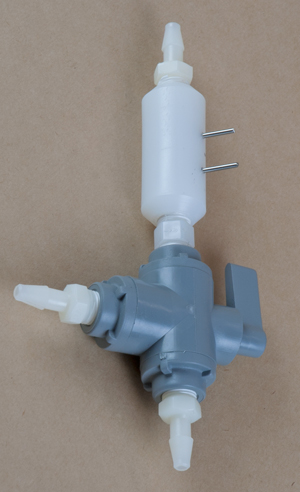
Mark and drill holes for the zip ties
The salinity sensor and valve assembly are located on the side of the fish tank platform.
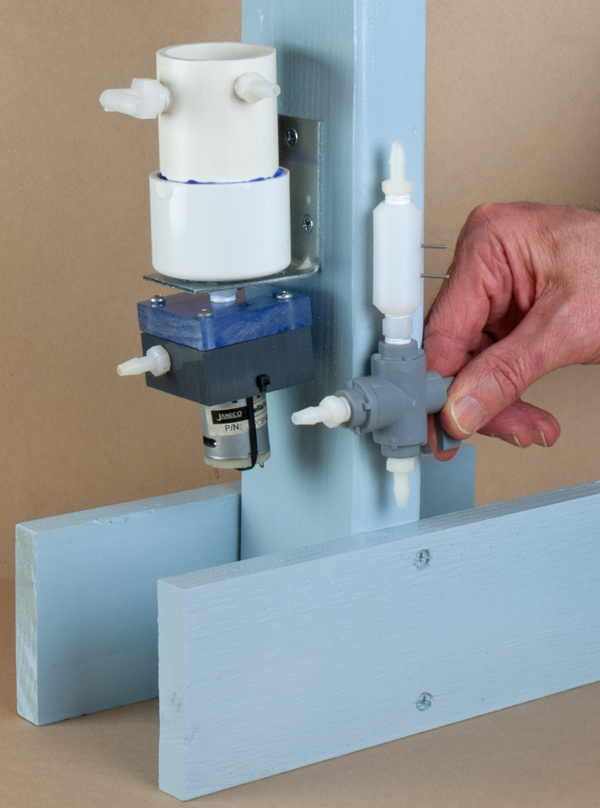
Mark three holes for the zip ties that will hold the salinity sensor. Two zip ties hold the three-way valve to the upright of the fish tank platform. The third zip tie holds the top of the
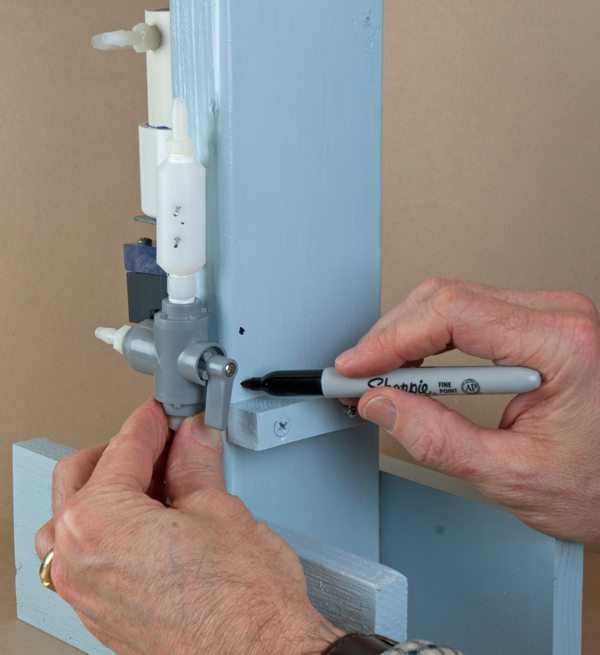
Eventually the zip ties will bind the salinity sensor and three way valve to the upright section of the fish tank platform as shown in the following photograph.
Use the following photos as a reference for the final location of the zip ties. The photo below and to the left shows the holes drilled for the zip ties. The photo below and to the right shows the zip ties cinched tightly.
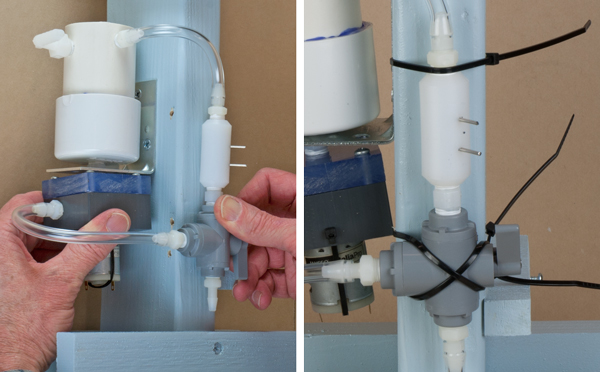
Mark and drill holes for the barbed tee fitting that joins the two drain lines.
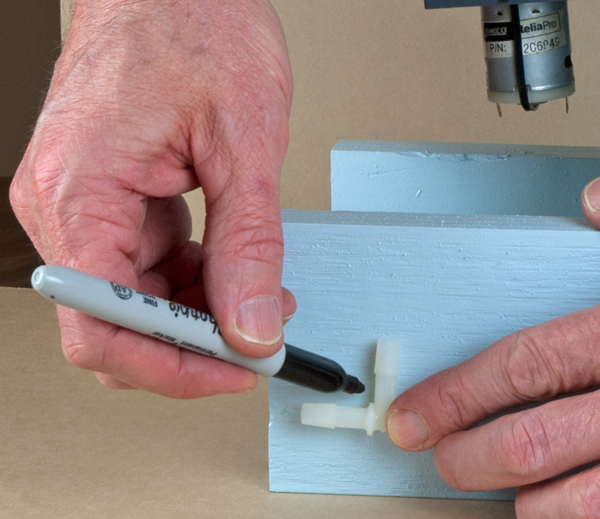
Measure and cut tubing
Have a partner hold the sensor and valve assembly into position. Measure and cut two lengths of tubing. The tubing should form gentle curves without kinks, and also without forming excessively long loops.
Attach the tubing by sliding it onto the ends of the barbed fitting.
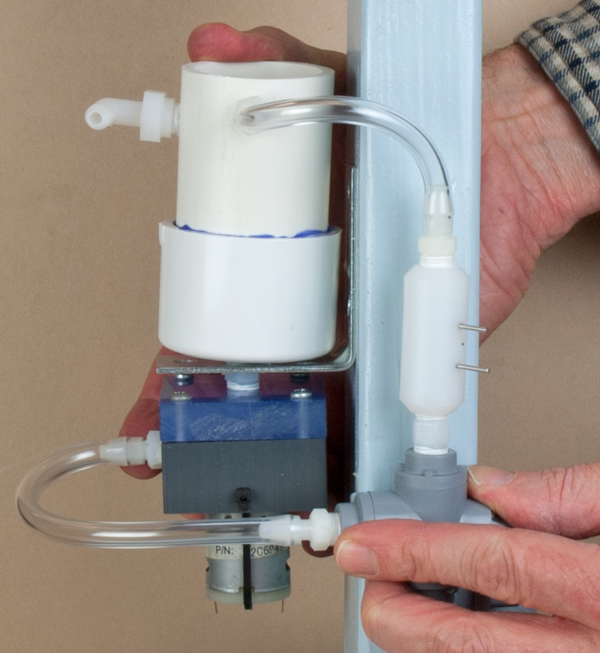
Finish the plumbing
Measure, cut, and install lengths of tubing from the drain lines to the tee. Cut a 24 inch (60 cm) length of tubing and connect it to the downstream side of the tee.
Use zip ties to secure the salinity sensor, the three way valve, and the drain tee to the wooden fish tank frame. Gradually tighten the zip ties as you make final adjustment to the positions of the components. The final plumbing loop is shown in following photo.
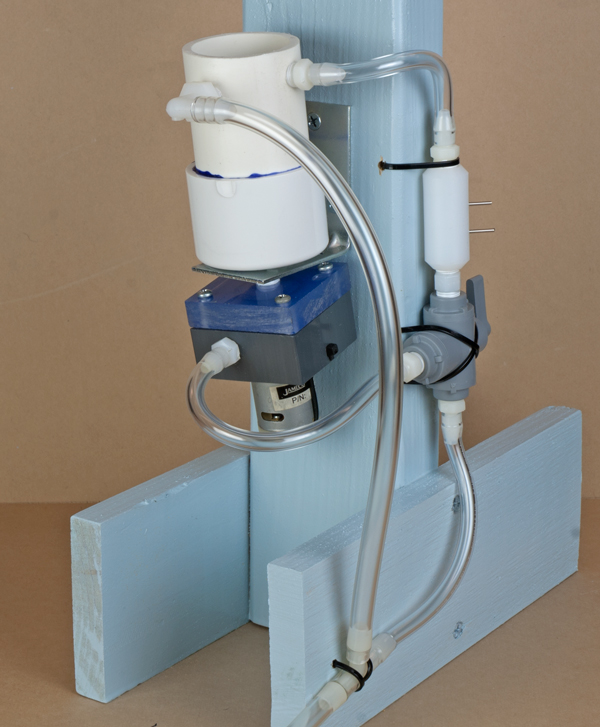
Next Step
The next step is to connect the wiring of salinity sensor to the breadboard.